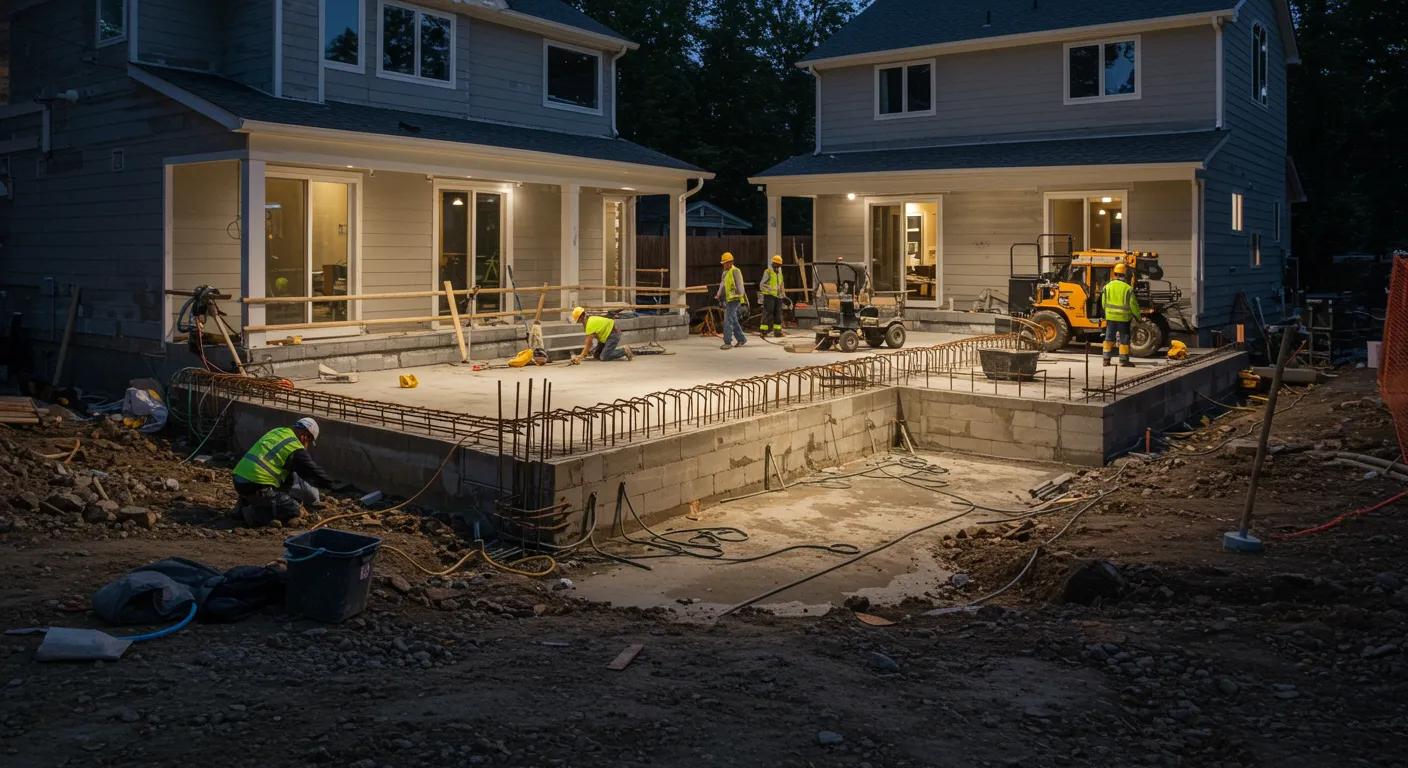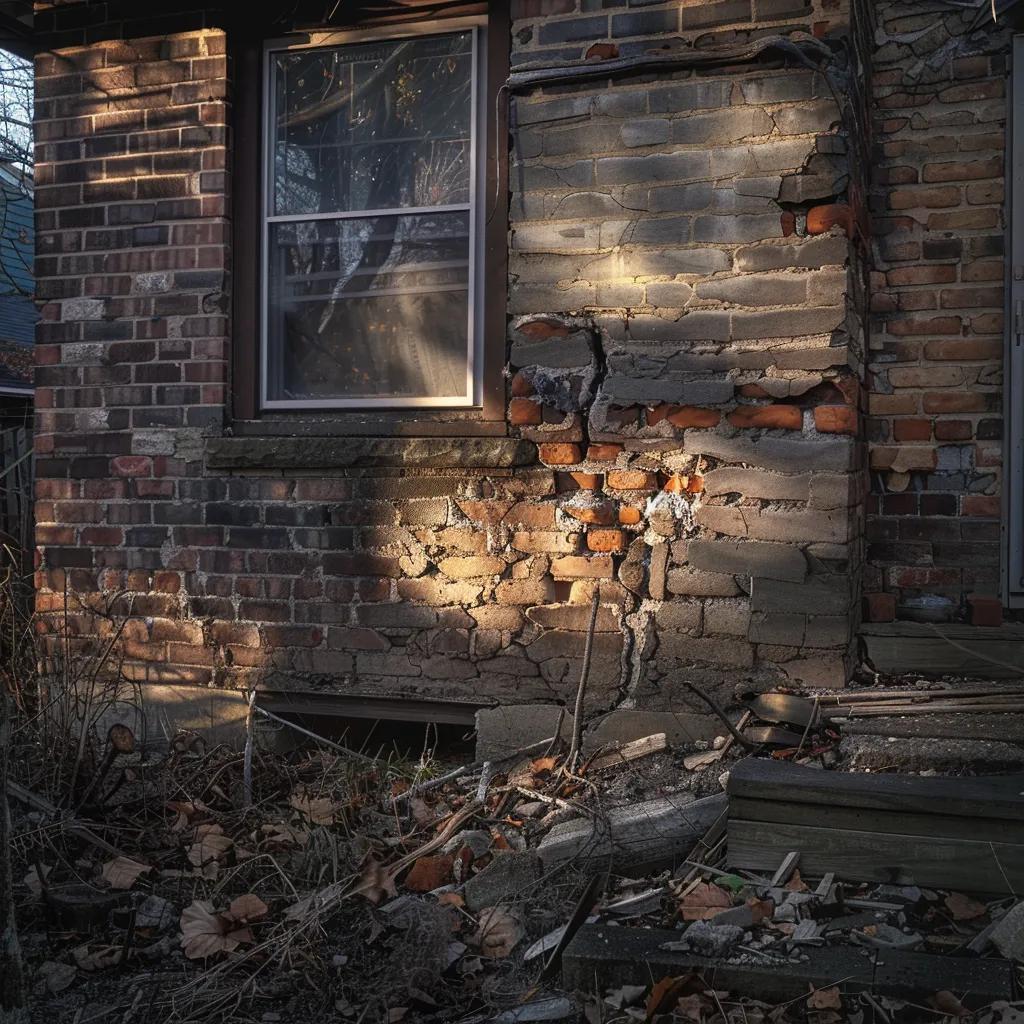Foundation Repair vs. Home Value: What Every Buyer Should Know
Foundation issues are among the most critical structural problems a property can face, directly affecting both safety and long-term market value. When a foundation fails or shows signs of settlement, cracking, or water seepage, the resulting damage can extend to walls, floors, and ceilings. Homeowners and prospective buyers must understand how foundation repair influences appraisal values, buyer perceptions, insurance claims, and mortgage negotiations. This article reviews the technical aspects of foundation repair, its financial implications, and how a well-executed repair can enhance a home’s market appeal, supported by data and expert evaluations.
The purpose of this article is to help homeowners and buyers assess the importance of addressing foundation issues promptly and to outline the long-term benefits of such repairs. We begin by exploring the fundamentals of foundation repair and then address the cost considerations, impacts on buyer confidence, and local market trends. Next, warranty options are reviewed along with the enduring benefits of investing in structural repairs. With clear, data-driven guidance and practical tips, this guide assists those seeking to maximize their property’s value while minimizing future risks.
Understand the Basics of Foundation Repair and Home Value
Foundation repair is essential for maintaining the structural integrity of a home. A compromised foundation can lead to misaligned walls, uneven floors, and cracks in ceilings that lower market value. A stable foundation not only signals safety and maintenance but also prevents secondary issues such as moisture penetration and mold growth. When damage is visible, property evaluations can be negatively affected, making timely repairs critical to sustaining home value.
Examine How Foundation Failure Impacts Property Worth
Foundation failure often causes gaps in load-bearing walls and misaligned finishes, signaling deeper structural problems. Appraisers and buyers scrutinize these issues; unresolved damage can reduce a home’s value by 20–30% and raise concerns during mortgage and insurance assessments. The high cost of repairs further reduces homeowners’ net equity, highlighting the direct link between foundation integrity and property worth.
Identify Signs That Indicate Your Foundation Needs Attention
Indicators of foundation problems include visible cracks in the basement or exterior walls, sticking doors and windows, uneven floors, and gaps between walls and ceilings. Subtle signs such as misaligned window frames or damp smells in the basement may also be warnings. Regular inspections by foundation repair experts help catch these issues early, reducing repair costs and preserving the home’s overall value.
Review Common Methods Used for Foundation Repair
There are several foundation repair techniques available based on the extent of damage: – Underpinning: Adds support beneath the foundation to prevent further settlement. – Helical Piers: Installed deep into the soil to transfer the load to stable ground. – Crack Injection: Uses epoxy or polyurethane resins to seal smaller cracks. – Mudjacking/Slabjacking: Raises and levels concrete slabs through soil stabilization.
Each method varies in cost-effectiveness, durability, and suitability for specific soil conditions. Consulting a reputable foundation repair company ensures that the proper technique is applied to both correct existing issues and prevent future settlement.
Analyze the Costs Associated With Foundation Repairs

Foundation repair can be a significant expense, but it protects property value and prevents further structural damage. Costs vary widely based on the chosen repair method, home size and design, regional labor rates, and damage severity. Evaluating these factors helps justify the investment, as timely repairs can improve market appeal and buyer confidence.
Outline Typical Expenses for Various Foundation Repair Methods
Generally, expenses differ by repair method: – Simple crack repairs and minor leveling: Approximately $3,000–$7,000. – Underpinning or pier installations: Between $10,000 and $25,000 or more.
These figures include material, labor, and equipment costs along with additional fees for soil tests and inspections. Although the upfront cost may be high, the long-term benefits of preventing extensive damage and structural deterioration often offset these expenses.
Evaluate How Repair Costs Affect Overall Home Equity
A well-maintained foundation enhances home equity significantly. For example, spending $15,000 on repairs can result in a higher market value, offsetting the investment through improved appraisal values. Homes that address foundation issues promptly tend to depreciate less over time, offering a better return on investment when later sold.
Consider Long-Term Financial Implications of Foundation Issues
Neglecting foundation problems can lead to recurring maintenance costs, higher insurance premiums, and financing challenges during appraisals. Persistent issues like water damage and mold increase repair expenses and may even create legal liabilities. In contrast, proactive repairs safeguard against future costs and preserve the home’s equity.
Discover How Foundation Repair Impacts Buyer Perceptions
The visible condition of a home’s foundation greatly affects buyer perceptions. A repaired, well-documented foundation instills confidence in the property’s overall health, whereas even repaired issues may raise concerns if documentation is lacking. A proven record of quality repair work reassures buyers that the property is safe and well maintained.
Investigate How a Repaired Foundation Influences Buyer Confidence
Professional foundation repair bolsters buyer confidence. Detailed documentation, including before-and-after photos and certifications from reputable foundation repair experts, validates the quality and durability of the work. This reassurance often translates into higher offers and strengthens the seller’s negotiating position by reducing the buyer’s leverage for price reductions.
Assess the Impact of Foundation Problems on Home Inspections
Home inspections place significant emphasis on examining foundation integrity. Inspectors look for visible cracks, uneven surfaces, and signs of water damage. Any detected issues become major negotiation points and can lead to requests for further repairs. Addressing foundation concerns early ensures a smoother inspection process and reduces potential red flags during sales negotiations.
Explore Buyer Negotiations Related to Foundation Conditions
During negotiations, buyers may use foundation issues as leverage by requesting price reductions or repair credits. Transparent documentation of previous repairs and valid warranty coverage can reduce these demands, as it demonstrates that the issues have been resolved effectively. Clear communication between buyers, sellers, and real estate agents is key to reaching a fair agreement that reflects the true value of the home.
Review Local Market Trends in Foundation Repairs

Local variations in foundation repair costs and methods impact both repair decisions and property valuations. In regions with expansive clay soils or high water tables, foundation problems may be more common and expensive. Conversely, areas with stable geology might experience fewer issues. Local market trends often show that homes with well-maintained foundations and documented repairs appreciate better and receive higher sale prices, reflecting controlled risk and proactive maintenance practices.
Identify Regional Variations in Foundation Repair Costs
Foundation repair expenses differ by region: – Regions with expansive clay soils or high water tables typically require more costly repairs (sometimes exceeding $20,000). – Areas with stable underlying rock often need only minor adjustments, with repairs costing less than $10,000.
Such variations underline the importance for both homeowners and buyers to consider regional soil conditions and labor rates when assessing repair costs and property values.
Analyze Home Value Trends Based on Foundation Stability
Properties with a history of reliable foundation repairs tend to command higher resale prices. Real estate professionals note that well-documented repairs enhance financing and insurance processes, further boosting market value by 10–15% compared to properties with unresolved issues.
Compare Different Neighborhoods Regarding Repair Needs
Different neighborhoods may show varied repair histories due to age, construction methods, and local soil conditions. Older areas may require extensive repairs, while newer communities benefit from modern engineering practices. Comparative market analyses help buyers differentiate between high-risk neighborhoods and those where foundation issues have been successfully managed.
Learn About Warranty Options for Foundation Repair
Warranty options play a crucial role in foundation repair by providing buyers and homeowners with assurance regarding the durability of the repair work. Warranties protect against future issues related to the repair, enhance property marketability, and often lead to higher sale prices by minimizing perceived risks.
Understand the Importance of Warranties in Home Selling
A transferable foundation repairwarranty is a strong selling point. It demonstrates that the repairs were conducted professionally and that the home is unlikely to face further structural issues. This assurance can speed up sales transactions and enhance overall market perception.
Explore What a Typical Warranty Covers for Repairs
Typically, a foundation repairwarranty covers continued settlement, stress cracks, and water infiltration issues directly related to the repair work. These warranties usually last between five to ten years, and may include provisions for maintenance and follow-up inspections, transferring post-repair risks back to the service provider.
Review the Warranty‘s Impact on Future Home Values
Homes with robust, transferable warranties generally fetch a premium in competitive markets. The added layer of security not only reduces perceived future risk but also serves as evidence of proactive maintenance practices, leading to higher appraisal values.
Investigate Long-Term Benefits of Foundation Repair

Long-term benefits of foundation repair extend beyond mere structural stabilization. A solid foundation prevents further damage, reduces maintenance costs, and increases a home’s overall durability. Investing in high-quality repairs not only protects the property but can also lead to significant appreciation in market value over time.
Understand How Repairs Prevent Further Damage and Costs
Timely foundation repairs stop minor issues from developing into major structural failures. By preventing differential settlement, homeowners can avoid the cascading damage to walls, ceilings, and floors that often result in expensive remediation. In this way, effective repairs control long-term maintenance budgets and safeguard the property’s overall integrity.
Assess How Repaired Foundations Contribute to Home Longevity
A sound foundation reinforces all structural elements, reducing stress on load-bearing walls, roofs, and floor systems. This leads to fewer emergency repairs and a more predictable maintenance schedule. In regions prone to extreme weather or seismic activity, the benefits of a solid foundation are even more pronounced, ensuring long-term durability and investor appeal.
Explore the Role of Foundation Integrity in Resale Potential
A well-maintained foundation is a major selling point. Home inspection reports highlighting certified repairs and warranties boost buyer confidence and facilitate easier financing and appraisal processes. As a result, properties with stable foundations often command premium sale prices and experience quicker market turnover.
Table: Comparative Overview of Foundation Repair Methods
Before the final section, the table below offers a concise overview of common foundation repair methods, associated costs, and long-term benefits:
This overview helps homeowners and buyers quickly gauge the cost-benefit ratio of each foundation repair technique and understand which method best preserves overall property value.
Frequently Asked Questions
Q: How soon should foundation repairs be addressed once issues are detected? A: Repairs should be initiated as soon as cracks, uneven floors, or sticking doors are observed. Early intervention minimizes further damage and helps preserve long-term value.
Q: Will foundation repairs completely eliminate the risk of future structural issues? A: While repairs greatly reduce future risk, ongoing maintenance and periodic inspections are recommended to catch any emerging issues.
Q: Do foundation repair warranties cover subsequent damage from external factors? A: Most warranties cover issues directly related to the repair work (e.g., further settlement or material failure). Coverage for external factors like severe weather varies by provider.
Q: How do foundation repairs affect mortgage lending and appraisals? A: Lenders and appraisers favor properties with stable foundations. Proper documentation and warranties can facilitate financing and result in higher valuations.
Q: Are there tax incentives or benefits for making foundation repairs? A: Tax incentives vary by local and state regulations. In some cases, repair costs qualify as a capital improvement, potentially increasing the property’s adjusted basis for tax purposes.
Q: How can buyers verify that foundation repairs were performed correctly? A: Buyers should request detailed documentation—including inspection reports, before-and-after photos, and certifications from the repair company—and consider a third-party inspection during escrow.
Final Thoughts
The integrity of a home’s foundation is crucial to long-term value and stability. Proactive repairs, supported by robust warranties and clear documentation, mitigate risks and boost buyer confidence. Homeowners who invest in quality repairs not only avoid unexpected future costs but also enhance resale potential, ensuring a safer, more valuable, and marketable property.


